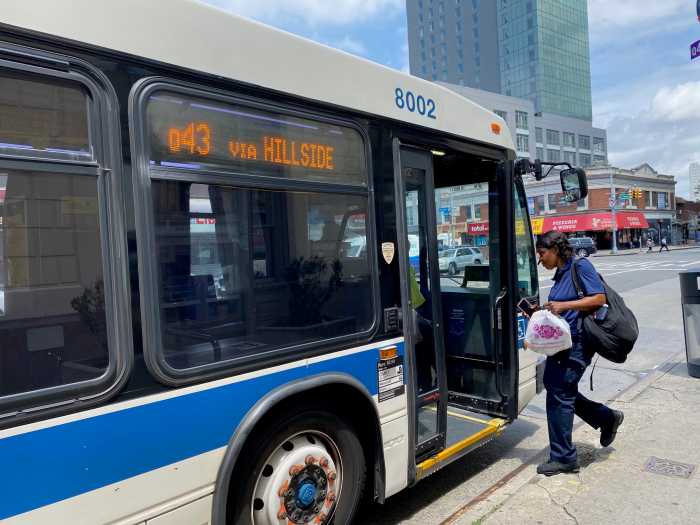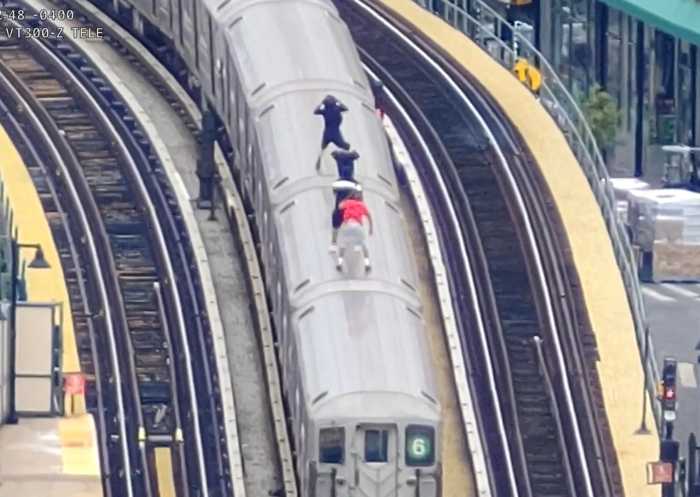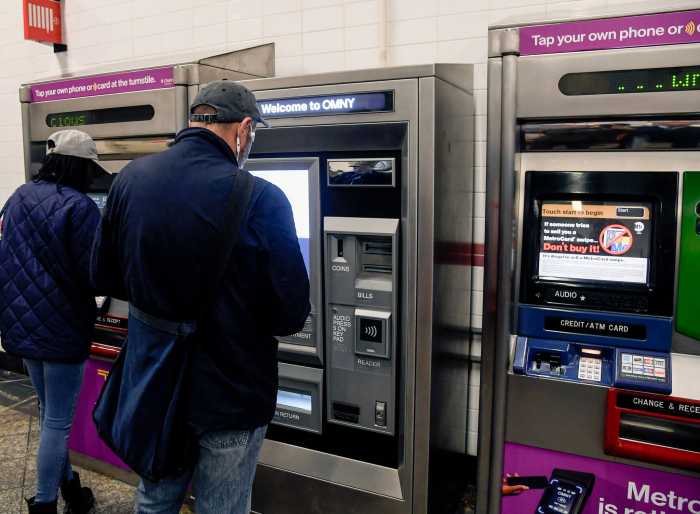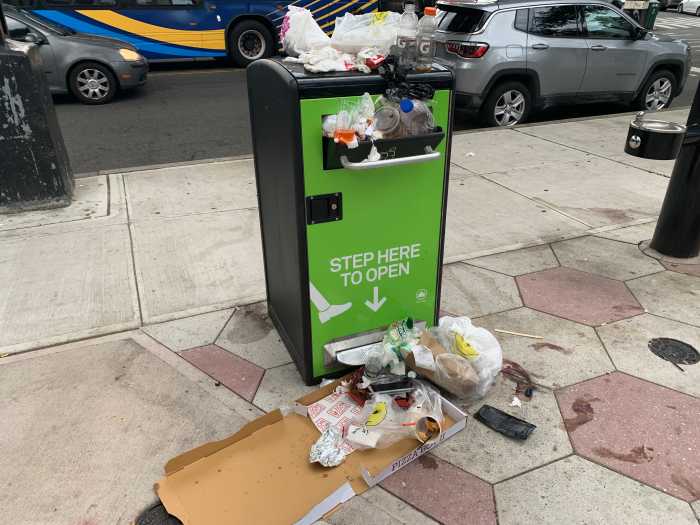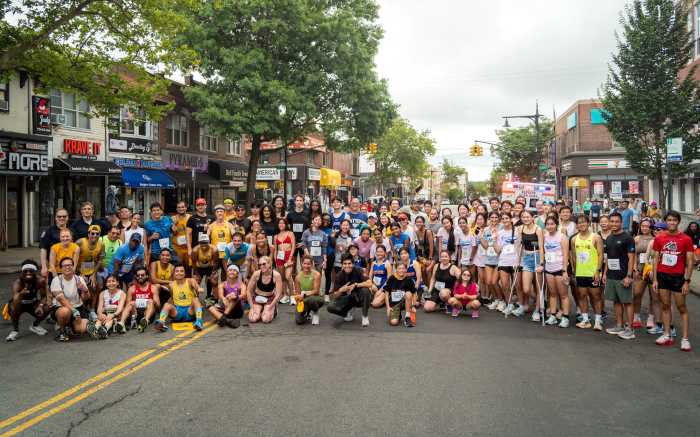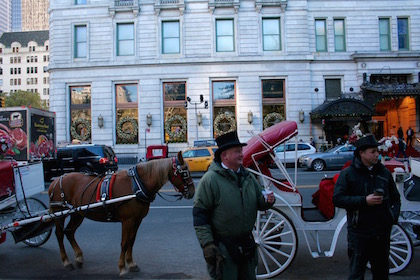
BY YANNIC RACK | On Midtown’s bustling West Side, a lot of things are changing. Longtime residents routinely rattle off familiar complaints about rising rents and overzealous development in neighborhoods once characterized by seedy tenement buildings and an industrial waterfront.
But in Hell’s Kitchen, one traditional piece of the neighborhood’s fabric is holding on stubbornly: the carriage stables that have called the area home for generations and still delight tourists and New Yorkers alike with rides through Central Park.
Today, there are only four carriage stables left in the city, all privately owned and located within a 15-block stretch of the same neighborhood, between 37th and 52nd Streets off of 11th Avenue.
“It’s very much a Hell’s Kitchen business,” said Conor McHugh, a carriage driver and the stable manager at Clinton Park Stables, which occupies a three-story gray brick building across from DeWitt Clinton Park on 52nd Street.
“A lot of carriage drivers used to live in the neighborhood back when I started,” he recalled. “This business, probably because it’s been around for 150 years, is part of the soul of New York.”
The largest of the four stables, Clinton Park is home to 78 horses that pull 39 carriages, out of only 68 that are licensed to operate in the city.
Like many of the men and women still working in the carriage industry, McHugh, an immigrant from Ireland and a 29-year veteran of the trade, reflects the history of the area as an ethnically diverse, working-class neighborhood.
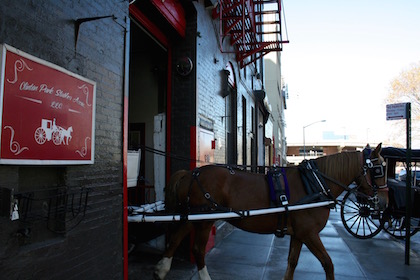
A relative newcomer in contrast, Christina Hansen only came to the city three years ago. She grew up in Kentucky but fell into the carriage business in Philadelphia more or less by accident, after breaking off her PhD studies in history.
Her background has proven to be a blessing, though; while showing visitors around Clinton Park Stables, she readily shares historical facts about New York’s carriage industry.
The current Clinton Park Stables, for example, were built in the 1860s for the city’s sanitation department, housing the horses that pulled street sweepers and garbage wagons.
The other three stables have been continuously used as such since they were built in the 19th and early 20th centuries.
“Hell’s Kitchen, for a long time, has had lots of stables,” said Hansen, who steers a carriage around the scenic slopes of the park for five to six days every week. “I found an old picture of the 37th Street stable when it was the new building on the block, and it had stables all around it.”
Although they’ve been a part of city life for what seems like forever, the carriages have been in the spotlight ever since Mayor Bill de Blasio pledged to drive them out of New York, supported by animal rights activists who have long pushed for a ban on the industry.
After a prolonged back and forth — with allegations of animal cruelty on the one side and charges of a political agenda driven and financed by real estate interests on the other — the mayor admitted this past summer that he didn’t have sufficient support for a ban in the City Council and the carriages were too popular anyway.
“This is something that we could have told him years ago, and it could have saved him and us a lot of trouble,” said McHugh.
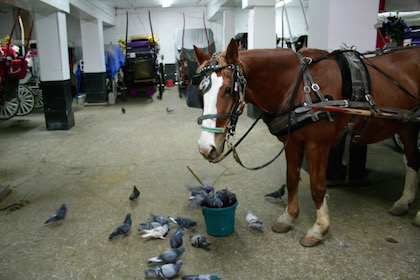
The mayor has now signaled that he would rather aim to scale down the number of carriages on the street, which have already been limited to 68 since the 1960s. Horse-drawn carriages, like motorized cabs, began being licensed under a medallion system when Fiorello La Guardia was mayor.
Asked about the administration’s current position on horse-drawn carriages, Wiley Norvell, a spokesman for the mayor’s office, wrote in an email that the city was continuing to work on “legislation that represents a humane and equitable solution that moves the horses off our streets, safeguards the animals, and protects the livelihoods of the men and women who provide carriage rides.”
“The thing is that, for 150 plus years, really almost 400 years now, the city has been very friendly to horses,” said Hansen. “It’s just this mayor has not been, and that’s a new thing.”
Not everyone is as concerned by the political situation, however. At Chateau Stables on West 48th Street, where the McGill family has owned and operated the smallest stable in the neighborhood since 1967, nobody takes the whole debate seriously enough to lose any sleep over it.
“We just sit it out, and we never worry. We don’t even give it a second thought,” said Anita Gerami, who runs the stable with her husband Alex and her mother, Gloria McGill.
“It’s an icon, I don’t think we’ll ever go away,” added her mom, who at 83 still comes down from her home in the Bronx to help out on weekends.
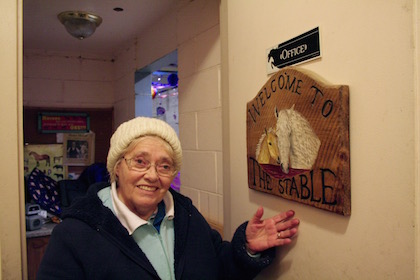
A small woman with wisps of white hair, McGill started working for the stable’s previous owner in the 1950s, when it was still located on West 98th Street and housed horses used by fruit peddlers and the like, who sold their wares off wagons.
The stable moved south in 1961, and six years later McGill and her husband, Buster, took over.
“It was very convenient in Midtown, because we got calls for Broadway shows, we got calls for film work,” she said. “We could just walk over with our horses, and we still do.”
The film and theater work later dried up, so next to carriage rides the stable now specializes in horse riding and pony parties.
It is also the only location in New York City for horse-drawn hearses used in weddings and funerals. A Chateau hearse brought James Brown’s body to a Harlem memorial service at the Apollo Theater, and Gerami said they also get a call every time a well-known rapper passes away.
On a recent Saturday afternoon, a birthday party was in full swing on the stable’s ground floor. RnB music blasted from the speakers and girls took turns riding on the ponies, while Anita’s husband and one of the stablemen prepared a coach for a hayride around the block.
In the crammed office room next door, McGill, sitting under framed pictures collected over six decades, reflected on the changes in her adopted neighborhood.
Back in the ‘60s, the street was still cobblestoned and lined with small businesses — a glass store, a radiator salesman, several auto repair shops. Now there’s a nightclub across the street and hotels all around.
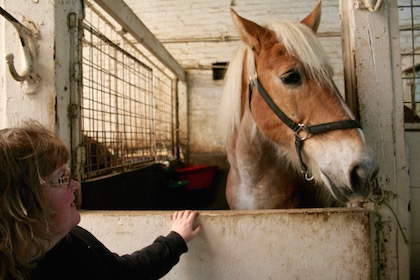
“Still, I feel like we’re a big part of the neighborhood. It’s a little piece of old Hell’s Kitchen that’s still here,” Gerami said.
For 33 years, in addition to working as a stableman at Chateau, her father — the very image of a carriage driver, always dressed in tuxedo and top hat — took care of police horses as a hostler for the NYPD’s Mounted Unit at Pelham Bay in the Bronx.
The force once employed around 800 horses, and today the NYPD still keeps more than 100 of them in the city, according to a spokesperson for the department. The animals are housed at four different stables in the Bronx, Brooklyn, Queens, and Manhattan, where the unit’s new citywide headquarters opened this year on West 53rd Street — only a block away from Clinton Park Stables.
In a sign of the times on the trendy West Side, the new police stable occupies the ground floor of a luxury apartment building, a location that’s out of reach for the private stables in the area.
Like McHugh and the McGills, the owners of West Side Livery on 38th Street are used to turning down offers to buy their property. The stable, sitting on a barren block dotted with auto repair shops not far from the Jacob K. Javits Convention Center, has been in the hands of the same family for almost half a century.
Just a few blocks south, the first tower of the Hudson Yards development is looming in the sky. Although the most prominent, it is by far not the only redevelopment project in the area.
“A blind man can see what’s going on down there,” said McHugh, who bought the Clinton Park Stables in 2003 with roughly a dozen of his fellow carriage drivers. They all felt their livelihood would forever be threatened unless they were independent from a landlord or leasehold. The stable is now operated as a co-op.
“We thought that the West Side was rapidly changing, and we would eventually end up with nowhere to keep the horses because the properties were getting developed right, left, and center,” he said.
Next to West Side Livery on West 38th Street, four buildings are currently being demolished to make way for two 60-story residential towers.
Tony Salerno, the stable manager there, said the owners are not interested in selling but he worries about the future anyway.
“Right now there’s a lot of pressure. They wanna build really bad,” he said. “In the meantime we worry about where we go. We’re trying to stay as long as possible. Right now, we’re looking at the possibility of finding another building. But it’s not easy.”
Salerno originally came to New York as a cabinetmaker almost 40 years ago. It was one of two trades his family practiced in his native Sicily — the other was driving carriages.
“And that time, we’re talking about 45 years ago, they used it for transportation, like a taxi,” he said, with an Italian accent so thick he might as well have stepped off a boat last week.
At 14 years old, his grandma would send him out to look for his grandpa, a carriage driver. He’d usually find him drunk at the local tavern, so he would load him into the back of the carriage and drive it home himself.
When he arrived in New York City, Salerno worked five days a week making furniture on the East Side, then came over to the stable on the weekends to drive a carriage in the park.
The mayor, reviving his seemingly lost cause to rein in the 220 horses still trotting the streets of New York City, now reportedly proposes to house a smaller number of them in a new stable in Central Park.
Asked about his take on that proposal, Salerno quickly did the math on how much room the carriages and horses, with all their feed and hay, would need. After a minute, he dismissed the idea as too complex and space-consuming.
“There’s more chance he’s gonna get out of the city before the horses,” Salerno said of the mayor.
Like the other stables still holding on, he said West Side Livery won’t be going anywhere anytime soon. And like every other carriage driver, he feels like that won’t just preserve a big part of New York’s history, but also the best job in the city.
“Maybe if I stuck with my old job, I would be rich today,” Salerno said. “But my passion was here…When I jump in the carriage and drive my horse to Tenth Avenue, I feel like the richest man in the world.”



